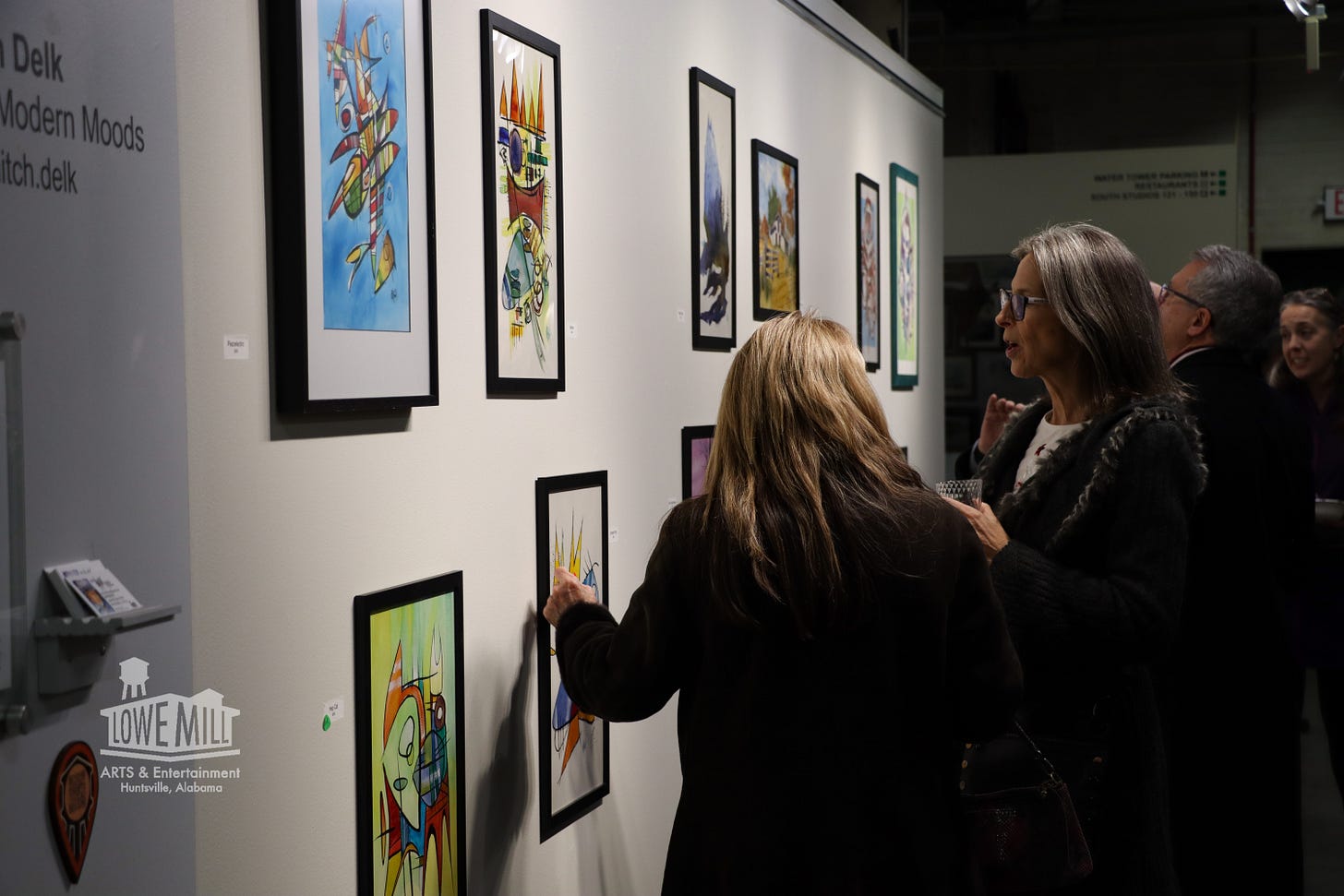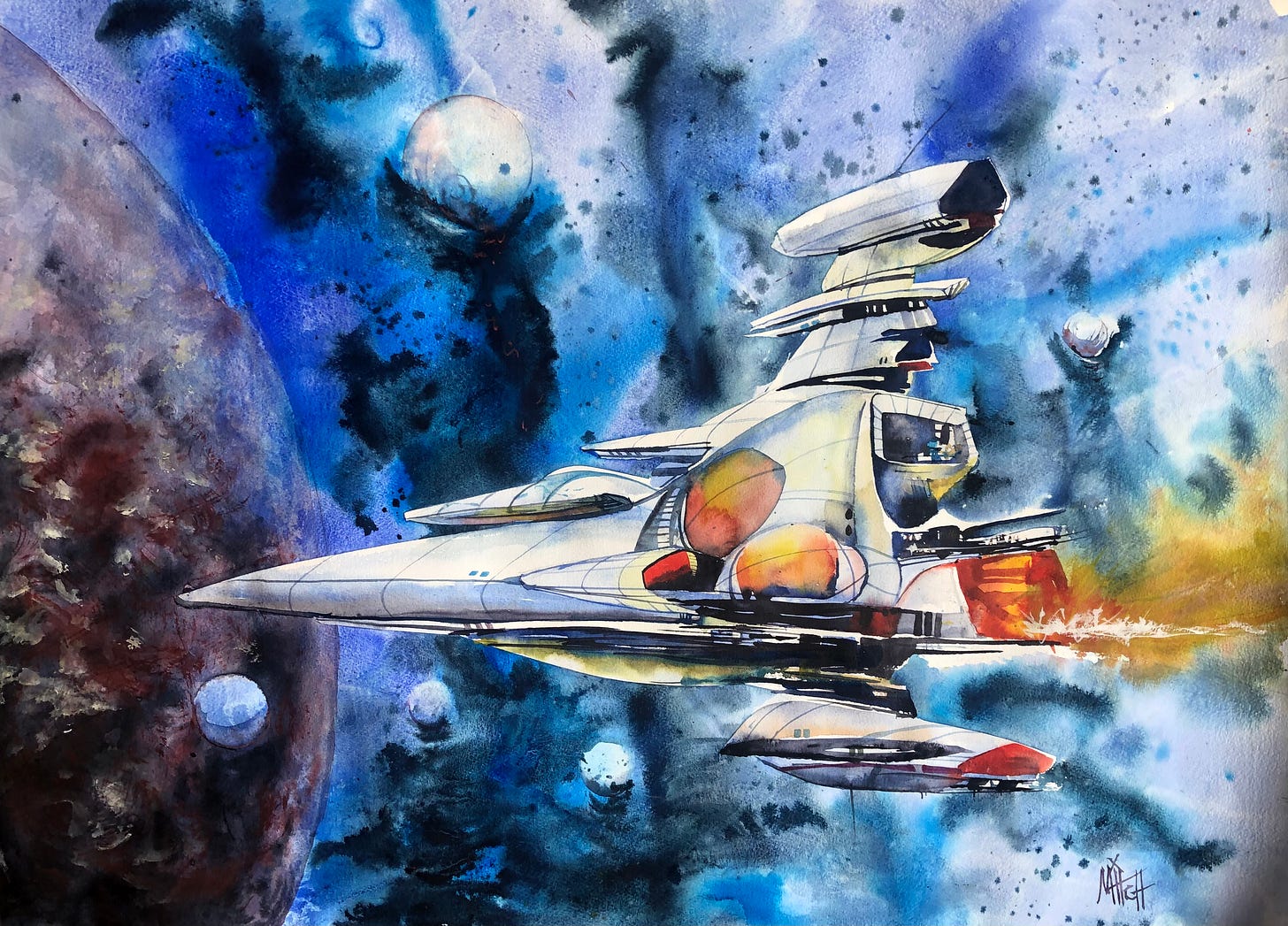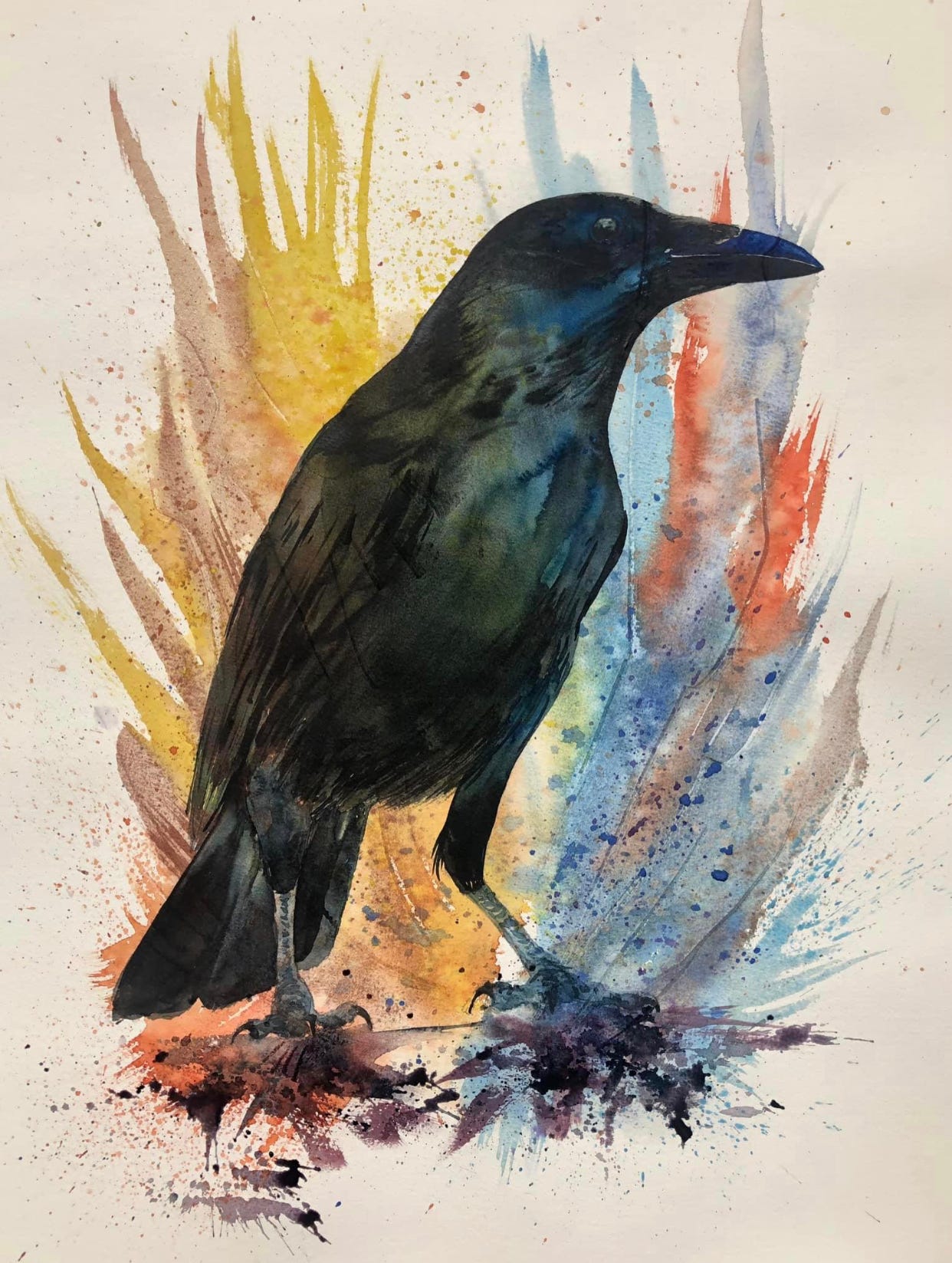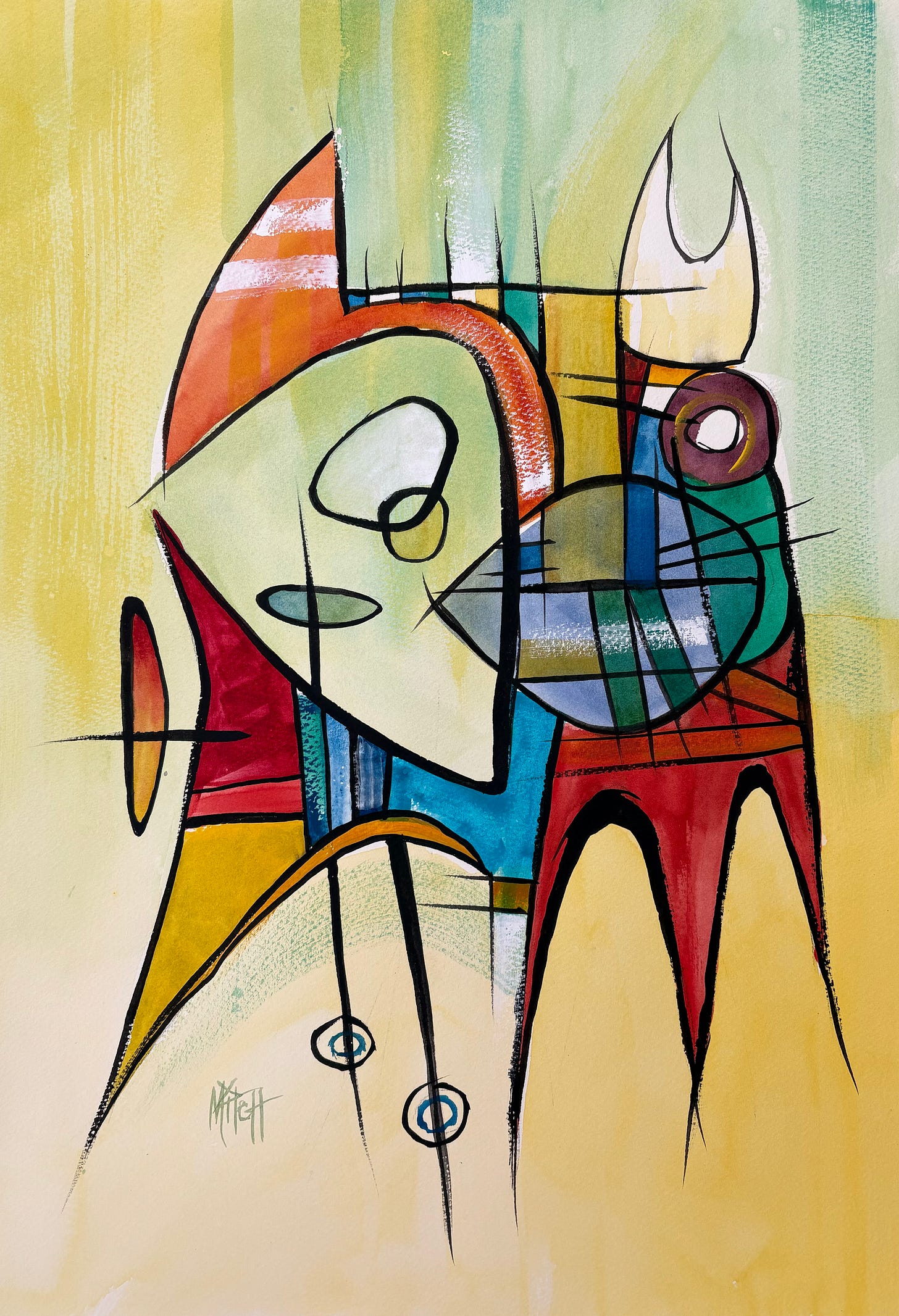by Kae Partida
In the art-beat of Huntsville, Alabama, Mitch Delk's journey through the art world is a testament to his adaptability and unwavering passion. From his early days in graphic design to his current devotion to painting, Delk's story unfolds with rich anecdotes and insights into his creative evolution.
A Nonlinear Path to Artistic Fulfillment
Mitch Delk's artistic journey is anything but straightforward. Initially entrenched in the graphic design industry, his career took an unexpected turn when he began working in logistics. "I've worked in graphic design for a long time," he recalls. "I’ve had a long career in the arts."
Around 15 years ago, Delk reignited his passion for painting. "It all started at home," he explains. "Painting has always been something I enjoyed” and eventually, Delk found himself seeking a more dedicated space.
Finding Solace in Lowe Mill ARTS & Entertainment
This quest led Delk to Lowe Mill ARTS & Entertainment, a vibrant creative community that provided the perfect environment for his artistic endeavors. "Having a studio here keeps me motivated," he says. His approach to watercolor painting is methodical and thoughtful, with each session meticulously planned. "With watercolor, you need to have a plan," Delk notes. "I come in and execute what I've visualized earlier in the week."
The atmosphere at Lowe Mill A&E, filled with fellow artists and a supportive community, fosters his creativity. "I don't have to have all this equipment at home," he adds. "And I enjoy the atmosphere and the people at Lowe Mill."
Exploring the Artistic Community
Delk's extroverted nature and love for community shine through in his interactions with other artists. "I'm an extrovert and I enjoy having people come into my studio and talking to them about art or their visit to Huntsville," he shares. Delk often ventures out to other studios, taking the time to connect with fellow artists and explore the local art scene. He reminisces, "I've got friends out in other studios, and I do like to walk around when I can."
The community at Lowe Mill A&E includes artists from various disciplines. Delk mentions his friends, like Matt Bender, a print-maker, and David Nuttall, of Artimaps, both of whom inspire and support each other's work. "My next-door neighbor, Andy Kruspe, runs the Irish Drum Center and teaches drumming all over the world," he adds, highlighting the diverse talents that surround him.
Educational Foundations and Artistic Heritage
Delk's artistic talents are deeply rooted in his upbringing and education. "My parents were both very artistic," he shares. His formal training in graphic design from Auburn University included extensive coursework in fine art and painting. This academic background laid the foundation for his early career, where he quickly secured a job in graphic design post-graduation.
Diverse Inspirations and Creative Expressions
Delk's artistic inspirations are as eclectic as his body of work. "My parents were in the heart of mid-century, and the house I grew up in was decorated in mid-century style," he explains. This era, with its unique aesthetic and rich use of illustrations in print literature, significantly influenced his tastes. "I definitely love the aesthetic of mid-century interior design, but even more than that, the print literature from that time."
His work spans a variety of subjects and styles. From science fiction themes to Picasso-inspired pieces, Delk enjoys experimenting with different forms. "I'll see something and think, 'I need to try one of those,'" he says. His portfolio includes realistic renderings, social commentary pieces, and personal portraits. "I paint portraits of my friends and my wife," he adds.
Commissions play a crucial role in sustaining his artistic practice. "What really keeps the doors open are commissions," Delk notes. People often request paintings of their pets, homes, or specific images they provide. "If we come to an agreement about the picture and what it may look like in the end using my style, then I'll do a commission."
Mastering the Art of Watercolor
Watercolor painting holds a special place in Delk's heart, not least because of its complexity. "Everything is watercolor," he asserts. "There's not any ink in any of these paintings." Influenced by his father, who also painted watercolors, Delk found himself naturally drawn to this challenging medium. "It's probably one of the more difficult mediums to handle," he admits. "But I enjoy the challenge of it. It's like walking a tightrope."
The unforgiving nature of watercolor requires precision and confidence. "You don't get second chances in watercolor," Delk explains. "You have to do it right the first time because there is no erasing or painting over with white." This discipline forces him to be loose and spontaneous, as he believes the best watercolors are those executed with minimal time and maximum freedom. "The less time you spend on a watercolor and the looser you are, the better they come out, in my opinion."
Despite the medium's difficulty, Delk's dedication shines through. "I've thrown away a lot of paper," he confesses, emphasizing the trial-and-error aspect of mastering watercolor.
Techniques and Influences
Delk enjoys the contrast between working wet-on-wet and wet-on-dry in his watercolor techniques. "The edges you can get using dry paper versus wet paper and how it handles is a whole lot to what makes a watercolor look good," he explains. His journey in mastering watercolor involved learning from traditional watercolorists, like Chuck Long, and Tony Couch, a master watercolorist who taught courses at the Huntsville Museum of Art. "Tony Couch is about 95 years old and still drives himself to teach master classes," Delk marvels, highlighting the enduring influence of seasoned artists on his work.
Delk shared that one of the key lessons he learned from Couch was the importance of "joining edges" in watercolor. "You can have a very hard edge with a dry piece of paper," he explains. "If you leave that hard edge into a wet area, it will disperse, creating a dynamic interplay of textures."
The Choice to Sell Originals
For Delk, the decision to sell only original artworks is both personal and pragmatic. "It's a bad business plan," he admits candidly. Initially, Delk offered prints to provide more affordable options for art lovers. However, the logistics of producing and managing prints became cumbersome. "I got to the point where I was just making prints and having to display them and manage all the wrapping and matting," he explains. Ultimately, Delk found that focusing on his original paintings was more fulfilling. "I'd much rather be painting," he states firmly.
This approach reflects his philosophy on ownership and creativity. "It's now theirs, and it's a baby, one of my babies, that's gone out into the world, and I hope it's enjoyed," he says. Delk takes pride in having several different styles to lean on, ensuring his work remains fresh and varied.
The Power of Color
A hallmark of Delk's work is his vibrant use of color, a skill honed from his graphic design background. "You learn the color wheel and what works together well," he notes. Delk emphasizes the importance of boldness in watercolor. "A lot of people that paint watercolors at first are very timid and don't use enough color. I like a strong line and a strong presence of color."
His love for color is evident in his diverse portfolio, and it sets his work apart. There's something about the color that makes people know, 'this is a Mitch Delk.’
Hope and Community in Lowe Mill ARTS & Entertainment
Beyond the technical and aesthetic aspects of his work, Delk finds hope and inspiration in the interactions he has with visitors to his studio. "It gives me hope about people when they come into my studio and want to talk," he reflects. The sense of community at Lowe Mill A&E helps bridge the gap that has grown with the rise of social media and the impersonal nature of modern interactions.
"I think since COVID, people are scared of engaging with those they don't know," Delk observes. "This is a place where people can unplug, walk around, and see what others are creating." He believes that the authenticity and personal effort put into each piece in the studios at Lowe Mill A&E offer a refreshing alternative to the mass-produced items prevalent in today's retail landscape. "Something that's not mass-produced," he concludes, encapsulating the ethos of both his work and the community around him.








